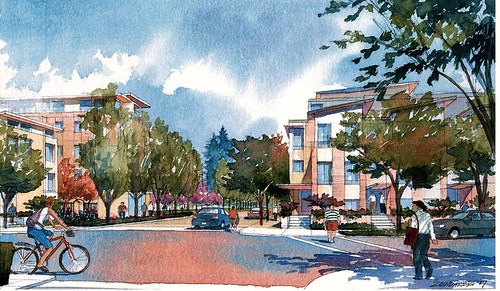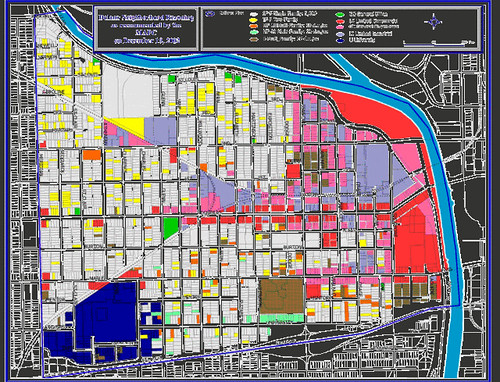5 ways that local groups and citizens can use LEED-ND

Posted January 24, 2011 at 1:24PM
Regular readers know that I have written early and often about LEED for Neighborhood Development, the smart growth and green development rating system created by NRDC and the Congress for the New Urbanism with the US Green Building Council, which is now administering the system. We developed LEED-ND primarily for application in situations where private developers would find it in their interest to obtain a green stamp of approval for their projects.
But another reason that NRDC devoted so much in resources to establishing the system is that we also believe it will be useful to local environmental groups, smart growth organizations, and citizens. LEED-ND contains a set of rigorous criteria in order to identify whether a development or proposed development can be said to be environmentally superior with respect to its location and access, its internal pattern and design, and its environmental technology. Here are some of the ways those criteria might be useful to citizens:
Evaluating development proposals
Have you ever wondered whether or not a proposal for new development was a good idea, whether it was environmentally friendly, and whether or not you should support it? Have you wondered if there were key areas where it could be improved? These are complicated questions that are not made any easier by the competing claims and messages of developers, neighborhood groups, government agencies, and other voices. LEED-ND offers one way to begin answering them impartially.
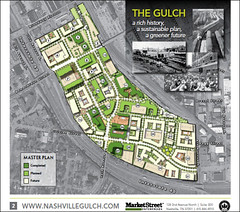 Perhaps the most basic use of the system is to promote and publicly support projects that obtain LEED-ND certification, particularly if they do so at a high (gold or platinum) level. While LEED-ND is not a guarantee that you’ll approve of every aspect of a project, it is a very good indication that a project’s environmental performance will be superior to average development.
Perhaps the most basic use of the system is to promote and publicly support projects that obtain LEED-ND certification, particularly if they do so at a high (gold or platinum) level. While LEED-ND is not a guarantee that you’ll approve of every aspect of a project, it is a very good indication that a project’s environmental performance will be superior to average development.
For projects that do not (or cannot) pursue LEED-ND certification, another approach is to perform your own internal LEED-ND audit using some or all of the categories and standards in the system. If a project meets the LEED-ND prerequisites and scores enough points to be certifiable at a high level, consider publicly supporting it. If the project is certifiable at least at a basic or silver level, think about it. If it does not appear to be certifiable, consider opposing it. (If you belong to an organization or agency that already maintains guidelines for which projects to support, it might be helpful to refine or augment those guidelines with standards from LEED-ND.)
Supporting a project could include speaking at public hearings and community meetings, providing marketing support, writing letters of support, or providing other resources. As talking points for this material, look at the project’s LEED-ND scorecard (the official U.S. Green Building Council scorecard if it is certified, or your own internal checklist if it is not but could have been) and see which credits it achieves. This is a good articulation of the project’s key strengths. If you are opposing a project, the list of which LEED-ND credits it does not achieve is also a helpful talking point.
Improving development proposals
You may also find opportunities to collaborate with private, public, or non-profit developers on a specific proposal. This is a great way to encourage sustainable neighborhoods and establish long-term working relationships with developers and other stakeholders in your community. LEED-ND can provide a helpful guide for this process.
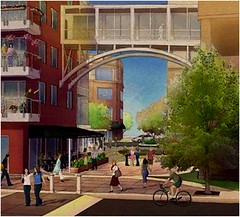 As a first step, you can encourage projects to become LEED-ND certified or insist that they pursue certification to earn your support. This will ensure that they meet basic location and design criteria for sustainability, and enable you to follow through on them when the project is built. But, whether or not a project pursues certification, you can use LEED-ND to identify a project’s strengths and weaknesses and generate some tangible design recommendations – about walkable streets, cycling facilities, energy efficiency, or any other topics that LEED-ND addresses. While LEED-ND standards are not a substitute for good design, they can show developers, designers, community members, and advocacy groups where a project is doing well environmentally and where it has room for improvement. The sooner you get involved in the design process, the better your chances for making a difference.
As a first step, you can encourage projects to become LEED-ND certified or insist that they pursue certification to earn your support. This will ensure that they meet basic location and design criteria for sustainability, and enable you to follow through on them when the project is built. But, whether or not a project pursues certification, you can use LEED-ND to identify a project’s strengths and weaknesses and generate some tangible design recommendations – about walkable streets, cycling facilities, energy efficiency, or any other topics that LEED-ND addresses. While LEED-ND standards are not a substitute for good design, they can show developers, designers, community members, and advocacy groups where a project is doing well environmentally and where it has room for improvement. The sooner you get involved in the design process, the better your chances for making a difference.
Improving existing neighborhoods
LEED-ND’s basic purpose is to assess or certify new development. But you can also use it to guide planning and investment in existing neighborhoods. For most neighborhoods, this process will involve three main steps:
- Evaluate the neighborhood. Work with local governments or other community organizations to conduct an audit of a neighborhood using the LEED-ND categories, prerequisites and credits.
- Focus on strengths and weakness. Identify areas where the neighborhood or community performs well under LEED-ND and where it does not, and solicit stakeholder input on community needs.
 Respond with a plan. Propose retrofits, targeted redevelopment, infrastructure improvements, or other measures that build on the neighborhood’s identified strengths and address its weaknesses. The level of detail and effort can vary widely – from an informal list of suggestions to a detailed design and policy proposal that becomes the backbone of a neighborhood plan. If a neighborhood is already the focus of a planning effort, participate in that process to ensure that it addresses the needs you have identified while protecting the neighborhood’s strengths.
Respond with a plan. Propose retrofits, targeted redevelopment, infrastructure improvements, or other measures that build on the neighborhood’s identified strengths and address its weaknesses. The level of detail and effort can vary widely – from an informal list of suggestions to a detailed design and policy proposal that becomes the backbone of a neighborhood plan. If a neighborhood is already the focus of a planning effort, participate in that process to ensure that it addresses the needs you have identified while protecting the neighborhood’s strengths.
Informing community planning and zoning
While LEED-ND is useful at the neighborhood scale, you can also apply it on a wider scale, informing community-wide plans, zoning codes, and other planning documents. Many local governments have comprehensive, citywide plans that provide long-term policy guidance for land use and transportation. Some also address the design of buildings and public space, economic development, public infrastructure, natural resource protection, parks, housing, health, or a variety of other issues. These are typically updated periodically.
You can use LEED-ND to audit your community’s plan, assessing how well it promotes these topics and suggesting improvements. [NRDC will soon release a citizen’s guide with a “LEED-ND checklist” to help you navigate this process and assist with other exercises identified in this post. You will also be able to use the checklist, along with the LEED-ND Rating System itself, as a source for policy language to adapt.] All LEED-ND credits and prerequisites also have a general “Intent” statement (easily found in the Rating System) that can sometimes be adapted for use in a community plan.
Most local governments also have a zoning code that guides how and where development can happen. Zoning codes can regulate anything from building heights and parking requirements to building uses, design and pedestrian orientation. They are often very detailed and technical. As a result, they can be intimidating to the layperson (or even the professional), but LEED-ND can suggest specific topics and standards to look for and encourage. For example, topics addressed in LEED-ND that you might look for and assess in zoning codes include density; building and sidewalk design for walkable streets; transit service and access; parking standards for cars and bicycles; affordable and varied housing; or even urban agriculture set-asides. The Green Infrastructure and Building section of LEED-ND also provides basic standards for building technology and neighborhood infrastructure.
In addition, you can encourage local governments, redevelopment agencies, developers, land trusts, affordable housing organizations, or other decision-makers to provide benefits to projects that meet LEED-ND standards. (For instance, the city of East Lansing, Michigan requires private development that receives city assistance and is over a certain size to attain LEED-ND or LEED-NC silver-level certification or above. The city of Nashville’s 2009 zoning ordinance provides a “height bonus” for LEED-ND-certified projects. Other cities, including Oakland, California and Boston, Massachusetts, require certain projects to submit a LEED-ND checklist demonstrating their level of performance.)
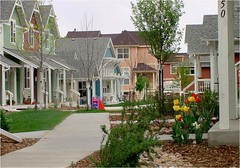 Potential benefits that might be provided include the following:
Potential benefits that might be provided include the following:
- Streamlined development approval process
- Fee reductions
- Tax credits
- Grants
- Allowing additional density or building height
- Sharing the cost of new infrastructure required by projects
- Marketing assistance
Informing specific state, local, and regional policy
Local governments often maintain topic-specific ordinances, master plans, design standards, or operations standards. Examples of these could include a parking or water conservation ordinance; a bicycle or pedestrian master plan; streetscape design standards; infrastructure replacement standards; a climate action plan; or an economic development plan. You can use LEED-ND [and the forthcoming NRDC checklist] to assess these policies. The system is organized by topic, so if needed you can consult just the policy topics that match your interest.
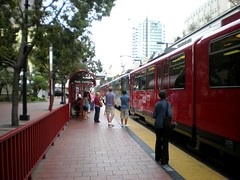 Many regions and states also have plans, policies, and regulations that might either deter or promote LEED-ND implementation. You can again use the rating system or a summary to review these state or regional policies and advocate reform if necessary. In some cases, there may be opportunities to remove barriers to LEED-ND implementation. In other cases, you may be able to adapt LEED-ND standards directly into these policy documents. Examples may include the following:
Many regions and states also have plans, policies, and regulations that might either deter or promote LEED-ND implementation. You can again use the rating system or a summary to review these state or regional policies and advocate reform if necessary. In some cases, there may be opportunities to remove barriers to LEED-ND implementation. In other cases, you may be able to adapt LEED-ND standards directly into these policy documents. Examples may include the following:
- State or regional land use plans
- State building codes
- Regional transportation funding
- Development standards or guidelines from air quality agencies
- Congestion management agency policies
- Regional water, wastewater, or stormwater regulations
In other words, LEED-ND is not just a certification system for green projects but also a ready-made set of environmental standards for land development. They can be useful to anyone interested in using them to make that development better.
Excerpted from A Citizen’s Guide to LEED for Neighborhood Development, by Raimi + Associates with NRDC staff and forthcoming from NRDC.
Move your cursor over the images for credit information.
